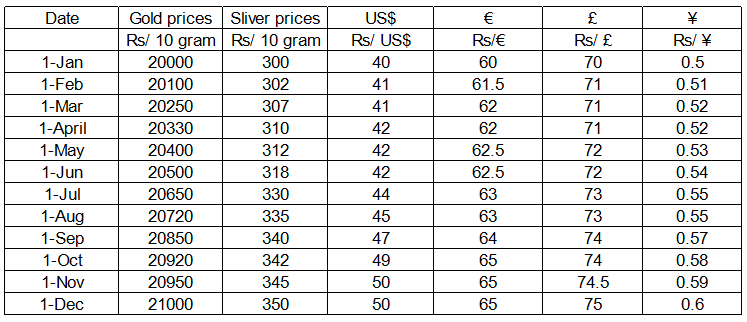1. At the beginning of every month, by sheer luck, Mr. Sanyal managed to correctly guess the asset that gave maximum return during that month and invested accordingly. If he liquefied his assets on 31st December 2010, how much was the percentage gain from his investments?
Show Similar Question And Answers
 Interest rates on US, EU, UK and Japanese bonds are 10%, 20%, 15% and 5% respectively.Mr. Sanyal invested his entire fund in gold, US bonds and EU bonds in January 2010. He liquefied his assets on 31st August 2010 and gained 13% on his investments. If instead he had held his assets for an additional month he would have gained l6.25%. Which of the following options is correct?
Interest rates on US, EU, UK and Japanese bonds are 10%, 20%, 15% and 5% respectively.Mr. Sanyal invested his entire fund in gold, US bonds and EU bonds in January 2010. He liquefied his assets on 31st August 2010 and gained 13% on his investments. If instead he had held his assets for an additional month he would have gained l6.25%. Which of the following options is correct? Powered By:Omega Web Solutions
Powered By:Omega Web Solutions